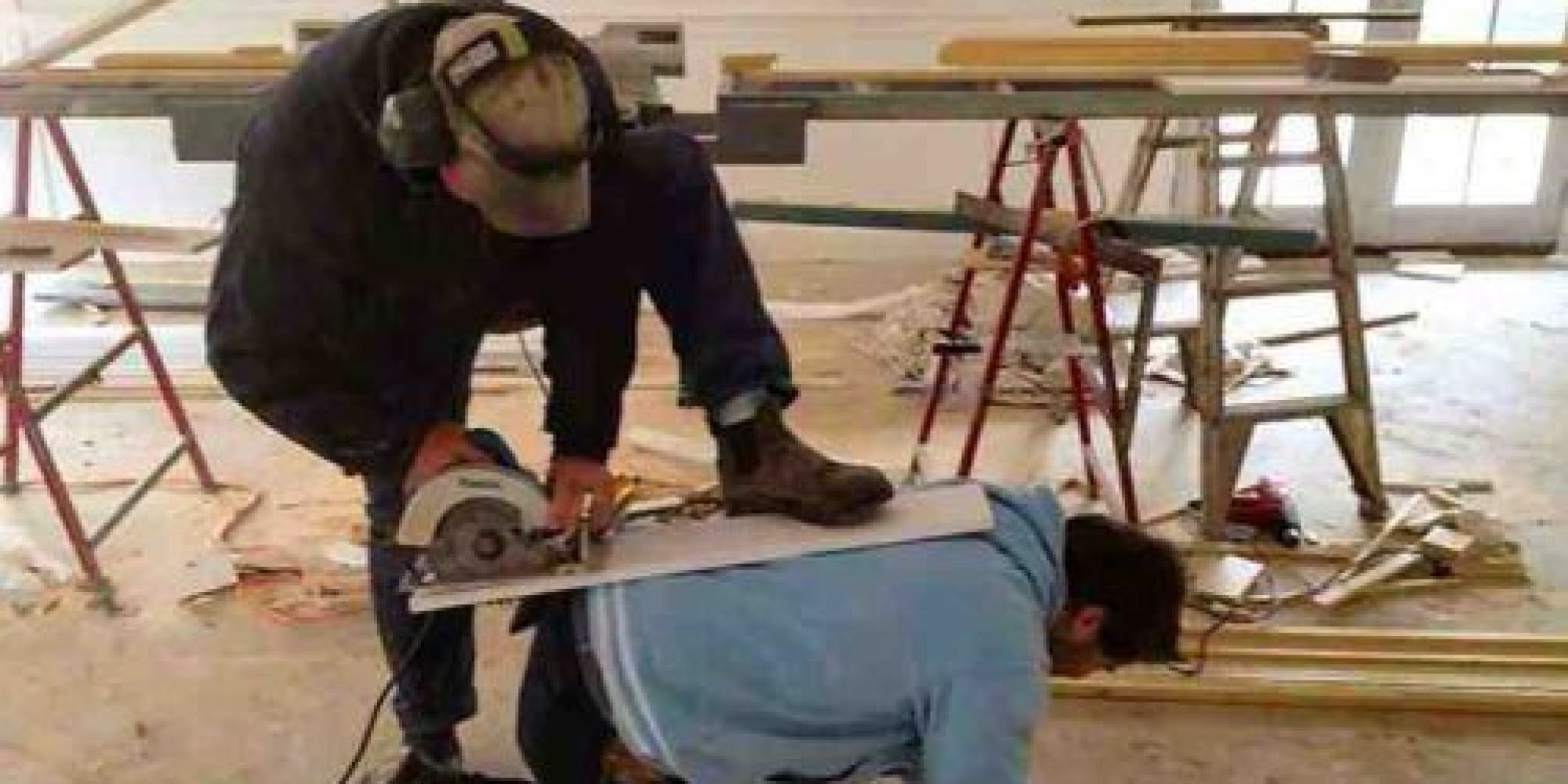A123Systems batteries can put out 70A continuous and can charge at 6A ... now you just need a k-type thermocouple for temperature reading and a microprocessor to toggle the FET switch.
-
SCAM WARNING! See how this scam works in Classifieds.
-
The Frolic by Limelight Giveaway has started!
You are using an out of date browser. It may not display this or other websites correctly.
You should upgrade or use an alternative browser.
You should upgrade or use an alternative browser.
VapCap Induction Heater for Desktop and in Car Use
- Thread starter Pipes
- Start date
-
- Tags
- dynavap induction heat vapcap
JackBrus
Member
Isn't it possible to use higher voltages? Like 110...230 Volt ? I mean:
- the coil works on mains voltage
- controlled by a FET, the gate of which is driven by a low voltage circuit (some form of wave chopping or high frequency PWM)
That way, both the low voltage part and the mains part only need small currents. Advantages:
* less problems with switches burning, electric arcs and so on
* more power available
* no empty batteries, no chargers needed
Disadvantage: no really portable (but on par with "The Plenty" or that Light Saber thing); not for a car but good for desktop.
@Pipes @Hippie Dickie did you consider that for the VC Induction Heater or the Bud Toaster? Thanks.
- the coil works on mains voltage
- controlled by a FET, the gate of which is driven by a low voltage circuit (some form of wave chopping or high frequency PWM)
That way, both the low voltage part and the mains part only need small currents. Advantages:
* less problems with switches burning, electric arcs and so on
* more power available
* no empty batteries, no chargers needed
Disadvantage: no really portable (but on par with "The Plenty" or that Light Saber thing); not for a car but good for desktop.
@Pipes @Hippie Dickie did you consider that for the VC Induction Heater or the Bud Toaster? Thanks.
The reason this thread came about was the fact that there is premade cheap induction heaters out there and without having to design the circuit. The idea is to keep this endeavor such that the skill level required is minimum.Isn't it possible to use higher voltages? Like 110...230 Volt ? I mean:
- the coil works on mains voltage
- controlled by a FET, the gate of which is driven by a low voltage circuit (some form of wave chopping or high frequency PWM)
That way, both the low voltage part and the mains part only need small currents. Advantages:
* less problems with switches burning, electric arcs and so on
* more power available
* no empty batteries, no chargers needed
Disadvantage: no really portable (but on par with "The Plenty" or that Light Saber thing); not for a car but good for desktop.
@Pipes @Hippie Dickie did you consider that for the VC Induction Heater or the Bud Toaster? Thanks.
Firm believer here in simple is best. Failing components can be changed by the user so no dependencies on initial provider.
Tons of designs.
Last edited:
did you consider that [Like 110...230 Volt ?] for ... the Bud Toaster? Thanks.
yes, and rejected ... A123System batteries for the win.
Andreaerdna
If God is the answer, then the question is wrong
OK, being testing the unit in the car for a couple days. Definitely need to do a couple things to make it work, BUT holy fuck, it works too well. Yes, the speed of the click is like under 3 seconds.
Excuse the messy car, man it shows up bad in a picture. Needs vacuuming pretty bad.
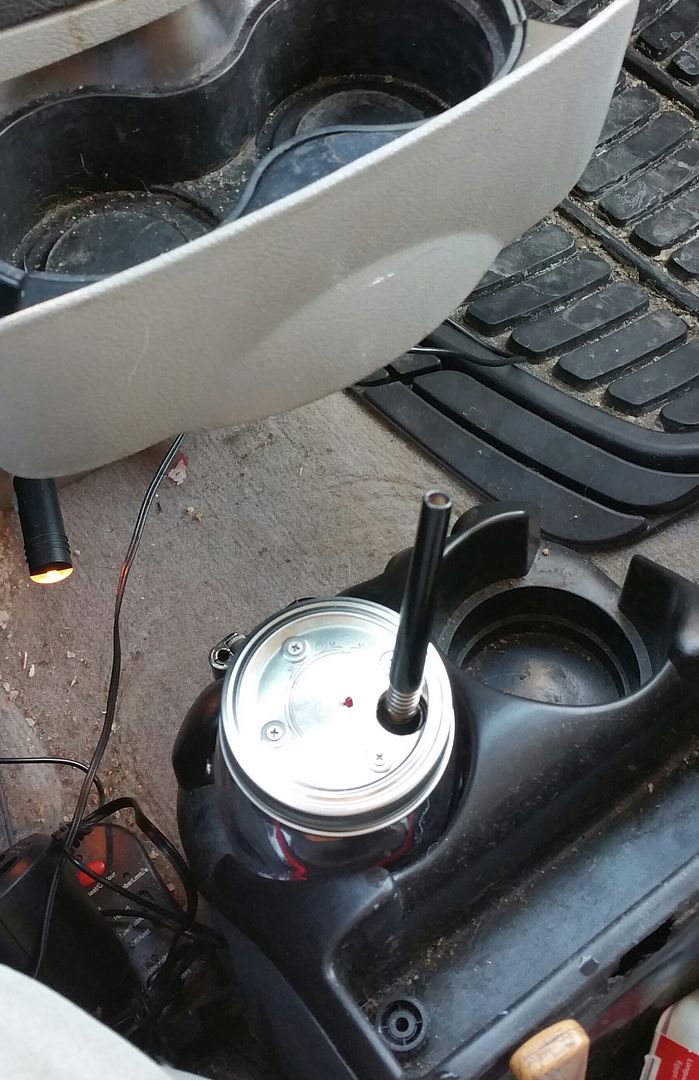
Here's how it all played out. I plugged my car adapter into the accessory jack and found the click was extremely fast. I took a haul and my god, I have never gotten that thick of tasty vapor out of this unit. Plus, zero char taste. I was cracking quite the smile and give it another go. 2 seconds and click, quickly pulled it out and again, wow. Full smile going on now.
Simply unbelievable. Went to try again and the unit was dead. I thought I must have blow the fuse.
However, the fuse was fine but the pressure spring had heated and compacted. So much for my car cord been the advertised rating.
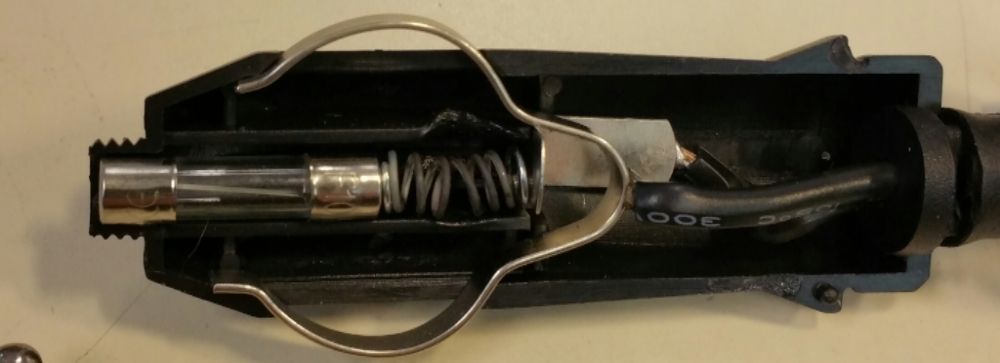
So attempt number 2. I found a spring that looked like it was heavy enough and give it a go. Again, two fantastic puff and it died.
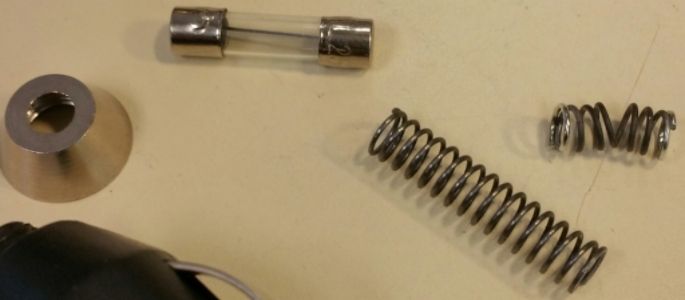
Again, the spring had collapsed.

Attempt number 3. This time I removed the spring completely and changed the fuse to a longer style and added a nut and bolt into the screw on tip. Shoved it into the accessory nice and tight. Now I was running on nitro. Yea ha, Consistently 5 huge clouds hauls per full bowl and then zero vapor. All depleted in the 5 hauls. I repeated this consistently a couple bowl fulls.
This is another level guys!!!
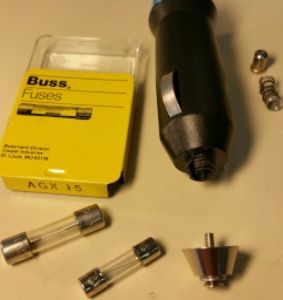
And all this time, I've been trying to match the heat up time to that of a lighter as a variable. Well let's toss that perception out into the trash.Seems to taste much nicer when heat up is quicker. Would like to see it around 3 seconds so your not so jumpy on getting out in time. You feel like you're in a gun showdown ready to draw. After all, overshooting the target also becomes quicker.
So what does this mean?
One thing is that I now recommend a more powerful supply. Like a 10 amp or 120 watt pup. My supply still works fine but have a longer wait for the click. It is just so cool to just dip it in and you hear the click so fast. Hard to believe what you get out of it in that short of time.
Secondly, for the car, I HIGHLY recommend a direct connection to the fuse box or behind the accessory plug. I plan to do so as well. Having a non-spring loaded accessory plug is far from ideal and want to not use it like that. If the connection becomes loose, it will heat up and be a possible fire hazard. Using about 5-6 feet of lamp cord will likely bring the click time down to 3-4 seconds.
So that's it for now. Things are looking more awesome than before!!!

Your finding is quite surprising indeed and it made me think about it.
So I did some test:
I used my vaponic to see if we can heat bare flowers directly (as they contain minimum quantities of iron and others metals). No we can't. At least with this setup
Then I put inthe Ti tip without cap and did 3seconds heating: the ti tip reacted directly getting hot. This is the main reason OG takes longer to heat (glass does not get heated directly / I thought TItanium also would have not reacted at least not so fast)
I think when you use induction coil with a high power source (car battery) it must be the bowl that warm up near instantaneously to vaporizing temps as the heat transfert from cap to bowl to load would require more time IMO
Edit: what about a convective vape where the heating source is a huge, wireless, grade 2 Ti web inside a Pyrex tube inside an induction coil?
It would need some temp/power control but it would be extremely cheap and quite pure (Ti at low temp) IMO
Last edited:
Copacetic
Somewhere North of The Wall
Something that occurred to me is to make a convection heater by simply stacking SS CCD screens inside a glass tube.Your finding is quite surprising indeed and it made me think about it.
So I did some test:
I used my vaponic to see if we can heat bare flowers directly (as they contain minimum quantities of iron and others metals). No we can't. At least with this setup
Then I put inthe Ti tip without cap and did 3seconds heating: the ti tip reacted directly getting hot. This is the main reason OG takes longer to heat (glass does not get heated directly / I thought TItanium also would have not reacted at least not so fast)
I think when you use induction coil with a high power source (car battery) it must be the bowl that warm up near instantaneously to vaporizing temps as the heat transfert from cap to bowl to load would require more time IMO
Edit: what about a convective vape where the heating source is a huge, wireless, grade 2 Ti web inside a Pyrex tube inside an induction coil?
It would need some temp/power control but it would be extremely cheap and quite pure (Ti at low temp) IMO
Maybe seperate them with short lengths of SS tube as spacers.
This heater couls either be heated, withdrawn from coil then used.
Or used while still being heated by coil.
Re' the battery powered induction heater.
Is it conceviable that one of those 3 battery e-cig mods that can deliver ridiculous wattages could be used to power the induction unit?
They have thier own charging and protection solutions built in, an even look fairly neat and tidy.
Work on the electronic component would be minimised, and all the connections and buttons are already designed to handle the currents required by the induction board.
Sorry if these are dumb suggestions, most of this discussion is now going over my head, so please forgive me if my ignorance is


The Beagle
That wasn't a microdose
what about a convective vape where the heating source is a huge, wireless, grade 2 Ti web inside a Pyrex tube inside an induction coil?

Your questions are right on!Something that occurred to me is to make a convection heater by simply stacking SS CCD screens inside a glass tube.
Maybe seperate them with short lengths of SS tube as spacers.
This heater couls either be heated, withdrawn from coil then used.
Or used while still being heated by coil.
Re' the battery powered induction heater.
Is it conceviable that one of those 3 battery e-cig mods that can deliver ridiculous wattages could be used to power the induction unit?
They have thier own charging and protection solutions built in, an even look fairly neat and tidy.
Work on the electronic component would be minimised, and all the connections and buttons are already designed to handle the currents required by the induction board.
Sorry if these are dumb suggestions, most of this discussion is now going over my head, so please forgive me if my ignorance is

The idea of using the heater for a different convection vape is something that I'm sure will be tried down the road somewhere. Encasing the metal in glass would make for a purer heat source. An interesting project with lots of bugs to work out but is a feasible one.
Using a mod as a power source is something I've being looking into. Seems impossible for the following reason. The Mod detects no atomizer and will not turn on. Even in power mode with locked resistance. I tried. Agreed, it would be an awesome route to go. Have asked the Evic programmers about it as well but again, too big of hurtle about the open atomizer lock out. The inductor circuity will give the required resistance once the current is flowing, however, the mod is doing it's ohms measurement with short pulses of voltage and the circuit doesn't have time to respond. (turn on)
A possible solution, but never tried as likely a waste of time, is to use a device similar to a car indicator circuit. Where there is a piece of metal which is normally shorted until it gets hot and clicks open until cools down and then makes connection again. The cycles then repeats. This is how the car signal flashers work. We would need something similar but it would need to be a manual re-settable to the shorted state. With such a device in parallel to the output, we could put a coil with the ohms we want the Mod to see in series with the clicker. As long as the induction circuit has time to fire, the theory is the mod will stay on.

An update on the 18650 front. I'm still using the same 3 cells for 3 evenings now of vaping. Still going after 24 bowls. We're up around the 100 toke mark now on the initial charge.

@Pipes how many mah are the batteries?
Please correct me if I'm wrong but series batteries are only the mah rating of one cell.
Even with high discharge capacity batteries 24 bowls is a mental amount.
The brief time there's a power draw more than makes up for the high amp draw the induction unit pulls.
I've always looked at it as being power hungry. So glad you've proved it the total opposite.
@Ruta I hope you're keeping an eye on this. No more worries about charging batteries when you're off camping.
Please correct me if I'm wrong but series batteries are only the mah rating of one cell.
Even with high discharge capacity batteries 24 bowls is a mental amount.
The brief time there's a power draw more than makes up for the high amp draw the induction unit pulls.
I've always looked at it as being power hungry. So glad you've proved it the total opposite.
@Ruta I hope you're keeping an eye on this. No more worries about charging batteries when you're off camping.
JackBrus
Member
Re: the idea to use a mod box to drive the induction heater. Could the problem be in the type of load that the mod box sees? A normal atomizer is (mostly) a resistive load. The induction heater is an inductive load. Even more so during switch-on and switch-off. Maybe a "soft start/close" may help?
@Pipes @Andreaerdna @Hippie Dickie or anyone try an IR sensor near an inductor?
https://www.sparkfun.com/products/9570
It may need to be either really close to the cap or need a shield, though would be interesting to look at. Gonna order some parts sometime..
https://www.sparkfun.com/products/9570
It may need to be either really close to the cap or need a shield, though would be interesting to look at. Gonna order some parts sometime..
*plainlazy*
Well-Known Member
@Andreaerdna I'm looking to start my own diy project and looking to do the wooden box style induction heater.
Can I ask how your getting on with yours? Also what are the dimensions of your box? Hope you don't mind me asking
Can I ask how your getting on with yours? Also what are the dimensions of your box? Hope you don't mind me asking
Andreaerdna
If God is the answer, then the question is wrong
@Andreaerdna I'm looking to start my own diy project and looking to do the wooden box style induction heater.
Can I ask how your getting on with yours? Also what are the dimensions of your box? Hope you don't mind me asking
I will be more than glad, kind of proud to share all, from dimensions of the box to the tools used, and answer questions, I'll write down everything and post it, hopefully before week end or at worst this week end.
Being quite a new DIYer myself, hopefully big master @Pipes will point out critical point where they are

The Beagle
That wasn't a microdose
@Andreaerdna, that's awesome! I'm definitely going to try make one myself.
*plainlazy*
Well-Known Member
@Pipes @Andreaerdna would love to see one of you guys or both Do a quick video showing from a cold start (both a cold vapcap and cold heater) how quick it is to vapor cloud. Cup vs box haha.
Can I ask do you or can you leave these heaters on all the time for on demand cap heating or is the idea to switch the heater on have a a cap or two and then shut it off?
When the heater is on does it smell like electronics heat smell? Like a hifi amp thats running hot?
Have either of you guys managed to get a temp dial on your heaters for like low temp heating and the high temp heating or is it one click fits all situation? Get what your given?
Thanks for reading
Can't wait to see more on this
Can I ask do you or can you leave these heaters on all the time for on demand cap heating or is the idea to switch the heater on have a a cap or two and then shut it off?
When the heater is on does it smell like electronics heat smell? Like a hifi amp thats running hot?
Have either of you guys managed to get a temp dial on your heaters for like low temp heating and the high temp heating or is it one click fits all situation? Get what your given?
Thanks for reading
Can't wait to see more on this
@Hippie Dickie or anyone try an IR sensor near an inductor?
never tried induction heating ... i settled on direct contact heating of the air flow channel - nichrome coil around glass tube - and that has worked well for me.
Absolutely NOT. The driving coil continues to climb in temperature even without a target to heat. It only takes a couple minutes to become hot enough to start smoking the enamel on the wire as it begins to burn off. I found the more you focus the eddie lines the more current it takes idle. The coil as it comes takes 1.2 amps idle and the coil I focused takes about double that.@Pipes @AndreaerdnaCan I ask do you or can you leave these heaters on all the time for on demand cap heating or is the idea to switch the heater on have a a cap or two and then shut it off?
When the heater is on does it smell like electronics heat smell? Like a hifi amp thats running hot?
Have either of you guys managed to get a temp dial on your heaters for like low temp heating and the high temp heating or is it one click fits all situation? Get what your given?
Thanks for reading
Can't wait to see more on this
If you google around about DIY induction heating, you'll find anything larger than this novelty item is made with copper tubing so it can be water cooled. They generally circulate water through the tube.
No smell of dust burning or such. It all happens too quick for that.
Temperature reading can not be taken from any part of heating device as the heat is transferred via invisible eddie lines of force. And again, happens so quick most measuring devices would not be quick enough to keep up. Yes, you get what you get.
Hope this helps. .... Jar verses Box..
 And in this corner...
And in this corner...@Pipes What gauge did you settle on for the work coil in the end? I've ordered 14awg enamelled copper already. Wondering if I should get a few others too. I still have to order the induction circuit since I doubt I'll get around to building one before I'd get it anyway. I've played with that IR thermal sensor before though I wonder how it'll function right near an induction coil. I don't have it anymore so I ordered another one already  I've got a bunch of microcontrollers around so I hope to eventually build a little control circuit. I hope I'll be able to detect a cap in the hole just with the IR temperature sensor somehow (like sudden temp change). Another idea is to use an IR trip sensor just above the coil to detect object insertion. I will try sense the cap temperature and keep the induction coil active till a pre-set temp is reacher or some safety timer.. will see how it goes in a month or two.. (chinese shipping.. fun)
I've got a bunch of microcontrollers around so I hope to eventually build a little control circuit. I hope I'll be able to detect a cap in the hole just with the IR temperature sensor somehow (like sudden temp change). Another idea is to use an IR trip sensor just above the coil to detect object insertion. I will try sense the cap temperature and keep the induction coil active till a pre-set temp is reacher or some safety timer.. will see how it goes in a month or two.. (chinese shipping.. fun)
 I've got a bunch of microcontrollers around so I hope to eventually build a little control circuit. I hope I'll be able to detect a cap in the hole just with the IR temperature sensor somehow (like sudden temp change). Another idea is to use an IR trip sensor just above the coil to detect object insertion. I will try sense the cap temperature and keep the induction coil active till a pre-set temp is reacher or some safety timer.. will see how it goes in a month or two.. (chinese shipping.. fun)
I've got a bunch of microcontrollers around so I hope to eventually build a little control circuit. I hope I'll be able to detect a cap in the hole just with the IR temperature sensor somehow (like sudden temp change). Another idea is to use an IR trip sensor just above the coil to detect object insertion. I will try sense the cap temperature and keep the induction coil active till a pre-set temp is reacher or some safety timer.. will see how it goes in a month or two.. (chinese shipping.. fun)So far I have just been using the coil that comes with the device. Never actually measured but around 1mm thick so 18 AWG? However, I do have an order for this coming as well as some sleeving to play with.
Wow, you've got lots of ideas about this pup. Love it.
I opted for the simple tactile switch for a couple reasons. You can feel the switch click on instead of looking for the LED to come on for confirmation. The biggest reason however is safety. If using an optical sensor or magnetic reed switch, the possibility of something falling into the hole, thus activating the coil, is always a concern. If the coil activates, it will overheat and cook within minutes.
Play safe.

Wow, you've got lots of ideas about this pup. Love it.
I opted for the simple tactile switch for a couple reasons. You can feel the switch click on instead of looking for the LED to come on for confirmation. The biggest reason however is safety. If using an optical sensor or magnetic reed switch, the possibility of something falling into the hole, thus activating the coil, is always a concern. If the coil activates, it will overheat and cook within minutes.
Play safe.

danald2000
Well-Known Member
Yes, one could. However, you'll find the complexity getting up there. Ideally, we want a delay that is settable between 0 and 15 second type thing. Could set it to forget about the click.
I tried a simple delay on the input of the FET. Charge capacitor and have it discharge through a potentiometer to the trigger of FET. This failed for two reasons, the input resistance of the FET circuit is more than hoped and need to use a large capacitor. And the main reason for failure is I was hoping the trigger would be a 100% on/off at a threshold but it actually follows the voltage some. Therefore, the power decreases to the coil as the cap discharges. Can't win them all.
Not saying it can't be done but would need a few more discrete components which I have been avoiding.
Me keep simple.
I tried a simple delay on the input of the FET. Charge capacitor and have it discharge through a potentiometer to the trigger of FET. This failed for two reasons, the input resistance of the FET circuit is more than hoped and need to use a large capacitor. And the main reason for failure is I was hoping the trigger would be a 100% on/off at a threshold but it actually follows the voltage some. Therefore, the power decreases to the coil as the cap discharges. Can't win them all.
Not saying it can't be done but would need a few more discrete components which I have been avoiding.
Me keep simple.
If the IR switch works it would probably have to be right under the cap and be mounted on top of the tactile switch. I'm not yet overly concerned with miss-use (like sticking a screwdriver in there) or accidents (how'd that screw get there?). More interested in tweaking it for intended use cases. Will try throw in some safety measures along the way due to effects of use  Ideally the IR sensor will read the cap temp accurately enough, and the coil won't ever need to be activated for more than a few seconds with around a 10 second safety limit. for a re-heat, it may even be done in 2 or 3 seconds. Options get pretty interesting once there's feedback and it goes digital. Microcontrollers themselves are pretty reliable.. as reliable as the code and circuit around it at least.
Ideally the IR sensor will read the cap temp accurately enough, and the coil won't ever need to be activated for more than a few seconds with around a 10 second safety limit. for a re-heat, it may even be done in 2 or 3 seconds. Options get pretty interesting once there's feedback and it goes digital. Microcontrollers themselves are pretty reliable.. as reliable as the code and circuit around it at least. 

 Ideally the IR sensor will read the cap temp accurately enough, and the coil won't ever need to be activated for more than a few seconds with around a 10 second safety limit. for a re-heat, it may even be done in 2 or 3 seconds. Options get pretty interesting once there's feedback and it goes digital. Microcontrollers themselves are pretty reliable.. as reliable as the code and circuit around it at least.
Ideally the IR sensor will read the cap temp accurately enough, and the coil won't ever need to be activated for more than a few seconds with around a 10 second safety limit. for a re-heat, it may even be done in 2 or 3 seconds. Options get pretty interesting once there's feedback and it goes digital. Microcontrollers themselves are pretty reliable.. as reliable as the code and circuit around it at least. 



